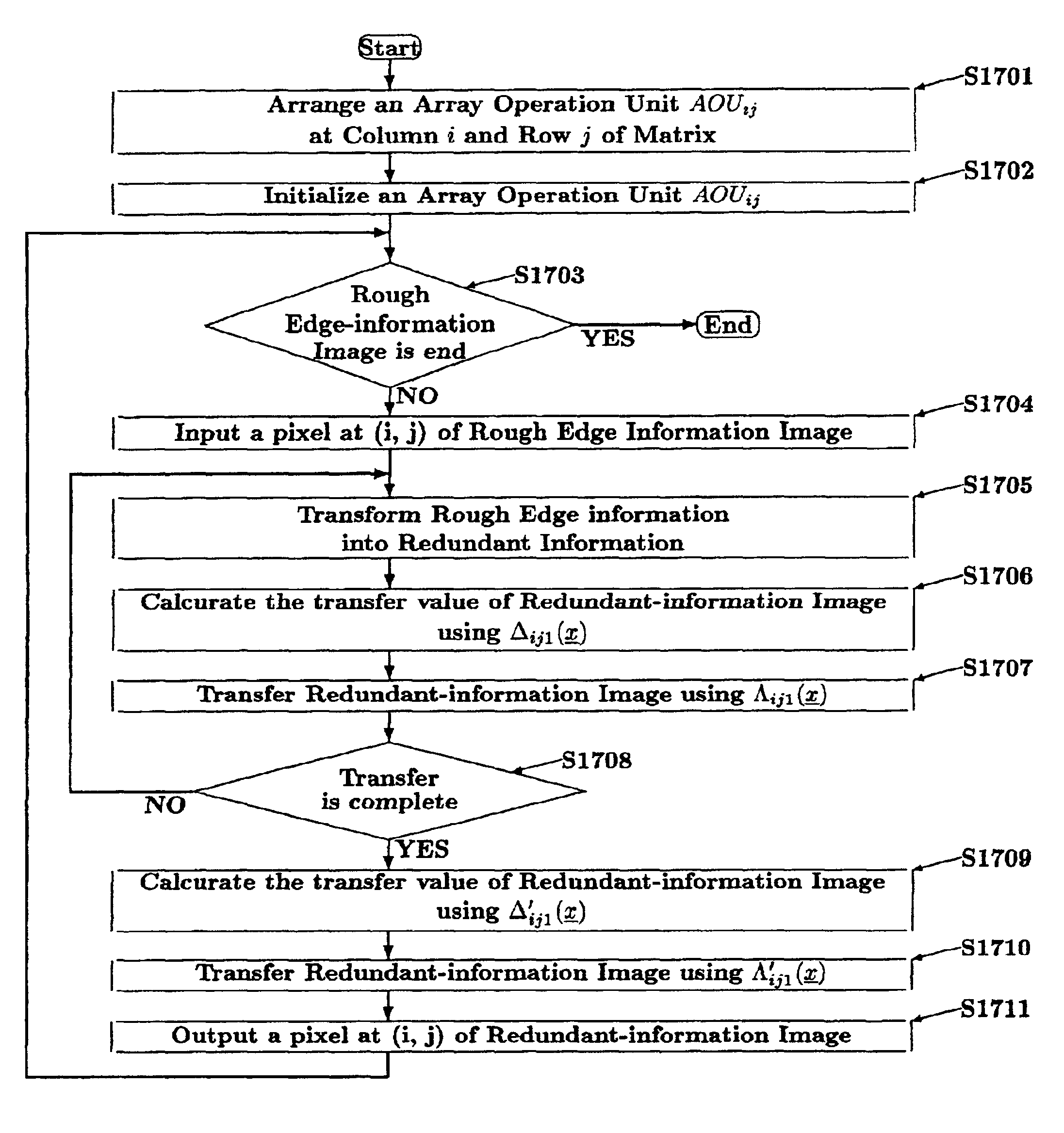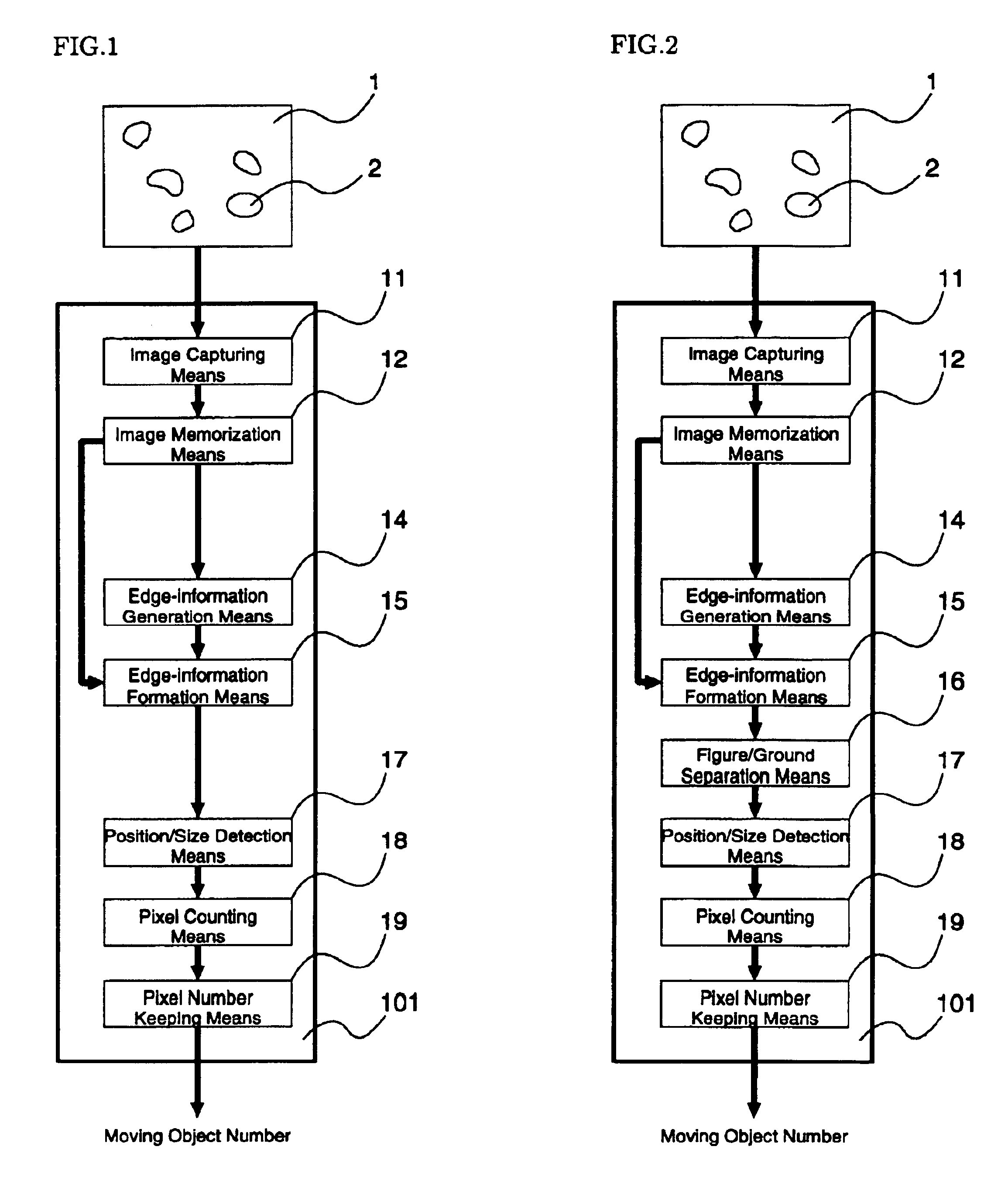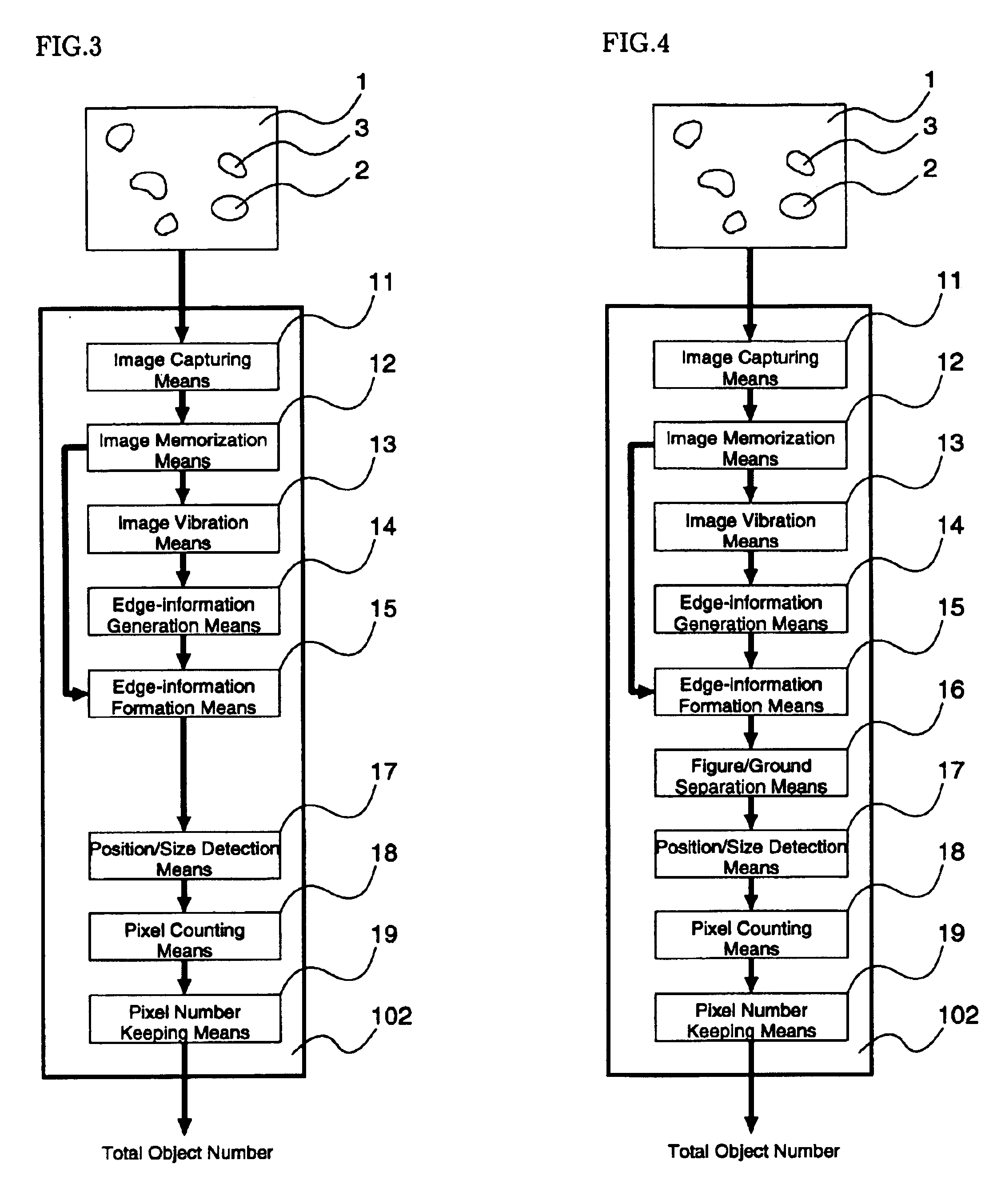Visual device
a technology of visual devices and electrodes, applied in the field of visual devices, can solve the problems of too expensive devices to accurately calculate information, difficult for this device to count the number of cells, and difficult to accurately calculate edge information in terms of cell contour, etc., and achieve the effect of easy correction of parameters and easy correction of parameters
- Summary
- Abstract
- Description
- Claims
- Application Information
AI Technical Summary
Benefits of technology
Problems solved by technology
Method used
Image
Examples
Embodiment Construction
It is described below about these enforcement forms of twelve visual devices shown in FIG. 1 to FIG. 12. These enforcement forms are realized by using an image capturing means 11 (refer to FIG. 1), which translates frame image 1 receiving from a video camera to the suitable format and size of digital image 111, an image memorization means 12 (refer to FIG. 1), which memorizes a digital image 111 for a certain period, an image vibration means 13 (refer to FIG. 3), which vibrates the digital image 111 by digital circuits, an edge-information generation means 14 (refer to FIG. 1 and FIG. 3), which generates rough edge information 112 of moving objects 2 or still objects 3 from two digital images 111, an edge-information formation means 15 (refer to FIG. 1), which forms rough edge information 112 into exacter and clearer formed edge information 114, a figure / ground separation means 16 (refer to FIG. 2), which separates areas distinguished by formed edge information 114, a position / size ...
PUM
 Login to View More
Login to View More Abstract
Description
Claims
Application Information
 Login to View More
Login to View More - R&D
- Intellectual Property
- Life Sciences
- Materials
- Tech Scout
- Unparalleled Data Quality
- Higher Quality Content
- 60% Fewer Hallucinations
Browse by: Latest US Patents, China's latest patents, Technical Efficacy Thesaurus, Application Domain, Technology Topic, Popular Technical Reports.
© 2025 PatSnap. All rights reserved.Legal|Privacy policy|Modern Slavery Act Transparency Statement|Sitemap|About US| Contact US: help@patsnap.com



